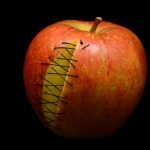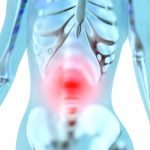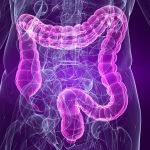Helminthic Therapy: An Emerging Intervention in the Era of Immune Dysregulation
Mark Davis, ND
Helminths are worm-like organisms that naturally live in and feed on about 1.5 billion human hosts around the world today.1 For most of medical history, helminths have been classified as parasites, but some of these organisms, such as Enterobius vermicularis (the common pinworm), may be commensal—benefiting from the human host without causing harm—and some others may actually be mutualistic—benefiting from the human host while conferring benefit upon the host.2 It is these conditionally mutualistic organisms, which confer benefit on some human hosts but not on others, based on ancestry, environment, and epigenetics, that I’ll focus on in this article.
Helminths and the Immune System
The adaptive immune system evolved in an era of highly prevalent infectious disease. As infectious disease has become less prevalent, immune disorders such as autoimmune, allergic, atopic and inflammatory conditions have become more prevalent.3 A significant part of the etiology of this increase in immune dysregulatory disease may be the very fact that infectious organisms like helminths are less frequently present to stimulate robust regulatory responses. One survival tactic of helminths appears to be reducing inflammation4 through selective down-regulation of certain aspects of the host’s immune function.5 There are multiple hypotheses about the mechanism of helminths’ ability to dampen hyperimmune reactions,6 but one predominant theory (the “old friends” hypothesis) revolves around the ability of helminths to induce a robust regulatory T-helper 3 (Th3), aka regulatory T cell (or T-reg) response.7
It has been hypothesized that reduced exposure to microbes in early life—a result of the emphasis on hygiene in industrialized societies—may be responsible for a shift in the immune balance toward a T-helper 2 (Th2) predominance, associated with allergic inflammation.8 T-helper 1 (Th1) lymphocytes evolved to detect and address intracellular microorganisms, and T-helper 2 (Th2) cells evolved to detect and address multi-cellular eukaryotes such as helminthes. Various autoimmune diseases have been correlated with either Th1 or Th2 hyperactivity, and a T-helper 17 (Th17) response is now also regarded as a key player in both autoimmune diseases and allergy.9,10 T-regs are now known to be key controllers of both Th1 and Th2 inflammatory responses.11 Helminths are not only able to stimulate T-regs, but also reduce Th1 and Th17 immune responses, thereby having the potential to favorably influence both allergy and autoimmunity.11
Geographical areas with higher concentrations of helminthic infection tend to have human populations with more genes associated with autoimmune disease,12 lending support to the idea that hyper-inflammatory responses associated with autoimmune disease may have historically been effective adaptive physiology in the presence of helminths, which now manifests as pathology in the absence of helminths.
Evidence is beginning to emerge that hosting an intestinal helminthic community may be preventative and in some cases therapeutic for immune disorders,13 including atopic and immune-mediated diseases,14 multiple sclerosis,15 atherosclerosis,16 autoimmune liver disease,17 allergic rhinitis,18 and perhaps even autism.19 I’ll sort out the history, risks, benefits and availability by organism.
Necator americanus
About 750 million people worldwide host hookworms – either Necator americanus (NA) or Ancylostoma duodenale (AD).20 Moderate-to-severe hookworm infection is associated with significant iron-deficiency anemia,14 but NA doesn’t cause anemia to the same degree that AD does.21 Mild-to-moderate NA infections (20-50 worm burden) appear to deplete ferritin (storage iron) but not hemoglobin or hematocrit.22
NA but not AD is considered conditionally mutualistic. NA may protect against asthma.23
In dose-ranging studies, doses of 10-100 larvae all tend to induce a maculopapular rash at the larval entry site, which was extensive and persistent for several weeks at the 100-larva dose. In addition, most subjects experienced some abdominal discomfort, and 2 subjects at higher doses (100 and 50 larvae) withdrew following diarrhea and vomiting several weeks after inoculation.24
Low doses of NA larvae (eg, 10 larvae) appear to be generally safe and well-tolerated, and may provide some benefit for seasonal rhinoconjunctivitis.18 There is evidence for non-significant improvement at the 10-larva dosing level for allergic asthma, and at those levels the larvae, despite migrating through the alveoli, do not cause clinically significant exacerbation of airway responsiveness.25
NA alters immune response to gluten in people with celiac disease,26 and may decrease lethargy in hookworm-naïve celiac patients exposed to gluten.27
Inoculation with 25 NA larvae (and reinoculation at 27 weeks with an additional 25 larvae) resulted in a mild itch at the inoculation site lasting a few days in patients with Crohn’s disease, who had a trend towards decreasing inflammatory bowel disease (IBD) symptoms, as well as decreases in immunosuppressive medications starting at week 17 following inoculation. Inoculation with 25 NA larvae resulted in a local pruritis and transient painful enteropathy in otherwise asymptomatic reservoir subjects.28
NA larvae are harvested from human reservoir donors and sold in measured batches as therapeutic agents at a clinical center in Tijuana, Mexico and a non-clinical center in the United Kingdom, at a cost of about $3000 per inoculation.29,30 The FDA has issued an import alert that NA larvae are not permitted to be imported into the United States without an investigational new drug application,31 hence Americans seeking inoculation have to travel to one of those sites for treatment. NA lives about 5 years in a human host, so individuals experiencing benefit would need to reinoculate within that time period in order to continue experiencing benefit. Individuals wishing to eradicate their NA population can do so with a single dose of mebendazole or albendazole.
Trichuris trichiura
About 800 million people worldwide host the human whipworm, Trichuris trichiura (TT).20 It is conjectured to also be conditionally mutualistic, and is sold by the same providers listed above for NA, for the same price. It is also prohibited to import into the United States without an investigational new drug application.31
The only mention of TT as a therapeutic intervention published in a peer-reviewed journal is by microbiologist P’ng Loke, who characterized the colon tissue cytokine profile of an individual with ulcerative colitis who intentionally hosted TT.32
Like NA, TT lives about 5 years in a human host, so individuals experiencing benefit would need to reinoculate within that time period for continued benefit. Individuals wishing to eradicate their TT population can do so with a single dose of mebendazole or albendazole.
Trichuris suis
Unlike NA and TT above, pig whipworm, or Trichuris suis (TS), often referred to as Trichuris suis ova (TSO), does not naturally inhabit the human gastrointestinal (GI) tract. Instead of living in the human GI tract for years like NA and TT, TS has a lifespan of about 2 weeks in the human host. It is dosed at 500-7500 eggs per dose,33 and re-dosed at 2-3 week intervals.
Although some authors have raised the clinical specter of TS migrating extra-intestinally,34 there have not been reports of extraintestinal migrations in humans despite hundreds (now certainly in the thousands) of therapeutic inoculations.35
TSO appears to provide clinical benefit for ulcerative colitis,36 and seems to be safe and tolerable at all tested dosing levels for patients with Crohn’s disease (CD).34 Initial research appeared to show significant clinical benefit using 2500 TSO per 3 weeks for patients with CD,37 but more recent, larger trials did not show significant benefit using 7500 TSO per 2 weeks for patients with mild CD, and showed only non-significant improvement over placebo for patients with more severe disease.38
TSO appeared to be well-tolerated and to induce favorable trends on MRI in 5 patients with multiple sclerosis.39
TSO at a dose a 2500 eggs per 3 weeks for 24 weeks did not induce clinical benefit for patients with seasonal rhinitis, but did induce a transient diarrhea that peaked at day 41 in one-third of participants.40
At this writing, all FDA-approved trials examining TSO as a therapeutic intervention in the United States are being managed via Coronado Biosciences; conditions being studied include inflammatory bowel disease, multiple sclerosis, autism, psoriasis, psoriatic arthritis, rheumatoid arthritis, and type I diabetes.41
Although governed by the same import alert as NA and TT, TSO appears to be imported into the United States from a company in Thailand42 relatively frequently, as of this writing at a price of approximately $400 per 15-mL vial containing 2500 eggs (adults commonly use a dose of this size every 2 weeks).
Enterobius vermicularis
A regression analysis based on rates of prescription of mebendazole in a large pediatric cohort to estimate instances of enterobiasis suggests that infection with Enterobius vermicularis, the human pinworm, does not protect against autoimmune or allergic disease.43 However, since virtually all children in the developed world contract enterobiasis at some point,44 this metric may not be a relevant one. Rook7 and others have suggested that enterobiasis may have the potential to benefit, but this has not been well explored.
Enterobius has not been, and is unlikely to be, commercialized.
Hymenolepis diminuta
Hymenolepis Diminuta (HD) is a rat tapeworm whose larvae (cysticercoids) have shown benefit for colitis in some animal models,45 while appearing to exacerbate induced colitis in other animal models.46 As of this writing, it is available through a company in the United States for an as yet undisclosed price.47
Naturopathic Philosophy and Helminths
If the primary cause of this modern epidemic of immune disease is a depleted microbiome,48 then making the GI microbiome replete with the helminths with which our immune systems coevolved is treating the cause.
Naturopathic physicians classically harness what Henry Lindlahr called the Law of Dual Effect.49 An example is using the application of a cold compress, which is itself vasoconstrictive, to induce the desired innate vasodilatory response from the organism. I hypothesize that many microbial medicines, including helminths, are harnessing the law of dual effect. It is less the direct action of the helminth on the tissues than the rekindling of an ancient relationship that has the capacity to induce an appropriate immune response. By reviving this long-lost but sorely needed message from a distant cultural past to an immune system that hasn’t caught up, we can stimulate the healing power of nature in the body’s own cells. I picture helminths like a friendly sparring partner, challenging an immune system evolutionarily accustomed to adversity and encouraging balance.
There is a lot of work to be done to determine what situations make which helminths mutualistic for which hosts (eg, genetic indicators12), and at what age. In general, though, this well-tolerated intervention can be seen as doing no harm in a field rife with pharmacological immunomodulating interventions with high rates of adverse events.
 Mark Davis, ND is a Portland, Oregon-based naturopathic physician who specializes in natural gastroenterology. He co-founded and serves as the medical director of the Good Life Medicine Center, a healing center that integrates food, drink, movement and hydrotherapy with practitioners from many healing traditions. Dr Davis serves on the board of directors of the Fecal Transplant Foundation and is applying to the FDA to use fecal transplants as an investigational new drug for patients with ulcerative colitis. He is the co-host of the popular podcast, The Naturocast, and is an alumnus of NCNM.
Mark Davis, ND is a Portland, Oregon-based naturopathic physician who specializes in natural gastroenterology. He co-founded and serves as the medical director of the Good Life Medicine Center, a healing center that integrates food, drink, movement and hydrotherapy with practitioners from many healing traditions. Dr Davis serves on the board of directors of the Fecal Transplant Foundation and is applying to the FDA to use fecal transplants as an investigational new drug for patients with ulcerative colitis. He is the co-host of the popular podcast, The Naturocast, and is an alumnus of NCNM.
References
[1] Brooker S, Clements AC, Bundy DA. Global epidemiology, ecology and control of soil-transmitted helminth infections. Adv Parasitol. 2006;62:221-261. [2] Zaccone P, Burton OT, Cooke A. Interplay of parasite-driven immune responses and autoimmunity. Trends Parasitol. 2008;24(1):35-42. [3] Bach JF. The effect of infections on susceptibility to autoimmune and allergic diseases. N Engl J Med. 2002;347(12):911-920. [4] Maizels RM, Balic A, Gomez-Escobar M, et al. Helminth parasites–masters of regulation. Immunol Rev. 2004;201:89-116. [5] Geiger SM, Caldas IR, McGone BE, et al, Stage-specific immune responses in human Necator americanus infection. Parasite Immunol. 2007; 29(7):347–358. [6] Tilp C, Kapur V, Loging W, Erb KJ. Prerequisites for the pharmaceutical industry to develop and commercialise helminths and helminth-derived product therapy. Int J Parasitol. 2013;43(3-4):319-325. [7] Hadley C. Should auld acquaintance be forgot… EMBO Rep. 2004;5(12):1122-1124. [8] Ngoc PL, Gold DR, Tzianabos AO, et al. Cytokines, allergy, and asthma. Curr Opin Allergy Clin Immunol. 2005;5(2):161-166. [9] Tesmer LA, Lundy SK, Sarkar S, Fox DA. Th17 cells in human disease. Immunol Rev. 2008;223:87-113. [10] Louten J, Boniface K, de Waal Malefyt R. Development and function of TH17 cells in health and disease. J Allergy Clin Immunol. 2009;123(5):1004-1011. [11] Khan AR, Fallon PG. Helminth therapies: translating the unknown unknowns to known knowns. Int J Parasitol. 2013;43(3-4):293-239. [12] Fumagalli M, Pozzoli U, Cagliani R, et al. Parasites represent a major selective force for interleukin genes and shape the genetic predisposition to autoimmune conditions. J Exp Med. 2009;206(6):1395–1408. [13] Elliott DE, Weinstock JV. Where are we on worms? Curr Opin Gastroenterol. 2012;28(6):551–556. [14] Reddy A, Fried B. An update on the use of helminths to treat Crohn’s and other autoimmunune diseases. Parasitol Res. 2009;104(2):217-221. [15] Correale J, Farez M. Association between parasite infection and immune responses in multiple sclerosis. Ann Neurol. 2007;61(2):97-108. [16] Magen E, Borkow G, Bentwich Z, et al, Can worms defend our hearts? Chronic helminthic infections may attenuate the development of cardiovascular diseases. Med Hypotheses. 2005;64(5):904-909. [17] Aoyama H, Hirata T, Sakugawa H, et al. An inverse relationship between autoimmune liver diseases and Strongyloides stercoralis infection. Am J Trop Med Hyg. 2007;76(5):972-976. [18] Croft AM, Bager P, Kumar S. Helminth therapy (worms) for allergic rhinitis. Cochrane Database Syst Rev. 2012;4:CD009238. [19] Bilbo SD, Jones JP, Parker W. Is autism a member of a family of diseases resulting from genetic/cultural mismatches? Implications for treatment and prevention. Autism Res Treat. 2012;2012:910946. [20] Brooker S, Clements AC, Bundy DA. Global epidemiology, ecology and control of soil-transmitted helminth infections. Adv Parasitol. 2006;62:221-261. [21] Albonico M, Stoltzfus RJ, Savioli L, et al. Epidemiological evidence for a differential effect of hookworm species, Ancylostoma duodenale or Necator americanus, on iron status of children. Int J Epidemiol. 1998;27(3):530-537. [22] Pritchard DI, Hookworm (Necator americanus) infection and storage iron depletion. Trans R Soc Trop Med Hyg. 1991;85(2):235-238. [23] Leonardi-Bee J, Pritchard D, Britton J. Asthma and current intestinal parasite infection: systematic review and meta-analysis. Am J Respir Crit Care Med. 2006;174(5):514-523. [24] Mortimer K, Brown A, Feary J, et al. Dose-ranging study for trials of therapeutic infection with Necator americanus in humans. Am J Trop Med Hyg. 2006;75(5):914-920. [25] Feary JR, Venn AJ, Mortimer K, et al. Experimental hookworm infection: a randomized placebo-controlled trial in asthma. Clin Exp Allergy. 2010;40(2):299–306. [26] Croese J, Gaze ST, Loukas A. Changed gluten immunity in celiac disease by Necator americanus provides new insights into autoimmunity. Int J Parasitol. 2013;43(3-4):275-282. [27] Daveson AJ, Jones DM, Gaze S, et al. Effect of hookworm infection on wheat challenge in celiac disease–a randomised double-blinded placebocontrolled trial. PLoS One. 2011;6(3):e17366. [28] Croese J, O’neil J, Masson J, et al. A proof of concept study establishing Necator americanus in Crohn’s patients and reservoir donors. Gut. 2006;55(1):136-137. [29] Worm Therapy: Helminth Induced Immune Modulation. http://wormtherapy.com/. Accessed October 15, 2013. [30] Immunotherapy using Probiotic Helminthic Therapy. Autoimmune Therapies Web site. http://autoimmunetherapies.com/. Accessed October 15, 2013. [31] U.S. Food and Drug Administration. Import Alert 57-21. FDA Web site. http://www.accessdata.fda.gov/cms_ia/importalert_159.html. Accessed October 1, 2013. [32] Broadhurst MJ, Leung JM, Kashyap V, et al, IL-22+ CD4+ T cells are associated with therapeutic trichuris trichiura infection in an ulcerative colitis patient. Sci Transl Med. 2010;2(60):60ra88. [33] Sandborn WJ, Elliott DE, Weinstock J, et al. Randomised clinical trial: the safety and tolerability of Trichuris suis ova in patients with Crohn’s disease. Aliment Pharmacol Ther. 2013;38(3):255-263. [34] Van Kruiningen HJ, West AB. Potential danger in the medical use of Trichuris suis for the treatment of inflammatory bowel disease. Inflamm Bowel Dis. 2005;11(5):515. [35] Summers RW, Elliott DE, Weinstock JV. Why Trichuris suis should prove safe for use in inflammatory bowel diseases. Inflamm Bowel Dis. 2005;11(8):783-784. [36] Summers RW, Elliot ET, Urban JF Jr, et al. Trichuris suis therapy for active ulcerative colitis: a randomized controlled trial. Gastroenterology. 2005;128(4):825-832. [37] Summers RW, Elliott DE, Urban JF Jr, et al. Trichuris suis therapy in Crohn’s disease. Gut. 2005;54(1):87-90. [38] Coronado Biosciences. CORONADO BIOSCIENCES ANNOUNCES TOP-LINE RESULTS FROM ITS TRUST-I PHASE 2 CLINICAL TRIAL OF TSO FOR THE TREATMENT OF CROHN’S DISEASE. http://ir.coronadobiosciences.com/Cache/1500053219.PDF?Y=&O=PDF&D=&FID=1500053219&T=&IID=4308955. Accessed October 15, 2013. [39] Fleming JO, Isaak A, Lee JE, et al. Probiotic helminth administration in relapsing-remitting multiple sclerosis: a phase 1 study. Mult Scler. 2011;17(6):743-754. [40] Bager P, Arnved J, Ronborg S, et al. Trichuris suis ova therapy for allergic rhinitis: a randomized, double-blind, placebo-controlled clinical trial. J Allergy Clin Immunol. 2010;125(1):123-30.e1-e3. [41] Coronado Biosciences. Research and Development, Pipeline. Coronado Biosciences Web site. http://www.coronadobiosciences.com/research-development/pipeline.cfm. Accessed October 15, 2013. [42] Tanawisa Company. Better medicine through biology. Tanawisa Web site. http://www.tanawisa.com/. Accessed October 15, 2013. [43] Bager P, Vinkel Hansen A, Wohlfahrt J, Melbye M. Helminth infection does not reduce risk for chronic inflammatory disease in a population-based cohort study. Gastroenterology. 2012;142(1):55-62. [44] Microbe World. This week in Parasitism. Racaniello V, Despommier V, hosts. TWiP 19: Enterobius vermicularis, the pinworm. This week in parasitism. http://www.microbeworld.org/podcasts/this-week-in-parasitism/archives/813-twip-19-enterobius-vermicularis-the-pinworm. Accessed October 15, 2013.
[45] Melon A, Wang A, Phan V, McKay DM. Infection with Hymenolepis diminuta is more effective than daily corticosteroids in blocking chemically induced colitis in mice. J Biomed Biotechnol. 2010;2010:384523. [46] Wang A, Fernando M, Leung G, et al. Exacerbation of oxazolone colitis by infection with the helminth Hymenolepis diminuta: involvement of IL-5 and eosinophils. Am J Pathol. 2010;177(6):2850-2859. [47] Biome Restoration. http://www.biomerestoration.com/. Accessed October 15, 2013. [48] Parker W, Ollerton J. Evolutionary biology and anthropology suggest biome reconstitution as a necessary approach toward dealing with immune disorders. EMPH. 2013;2013(1):89-103. [49] Lindlahr H. Nature Cure: Philosophy and Practice Based on the Unity of Disease and Cure. Chicago, IL: The Nature Cure Publishing Company; 1922.









